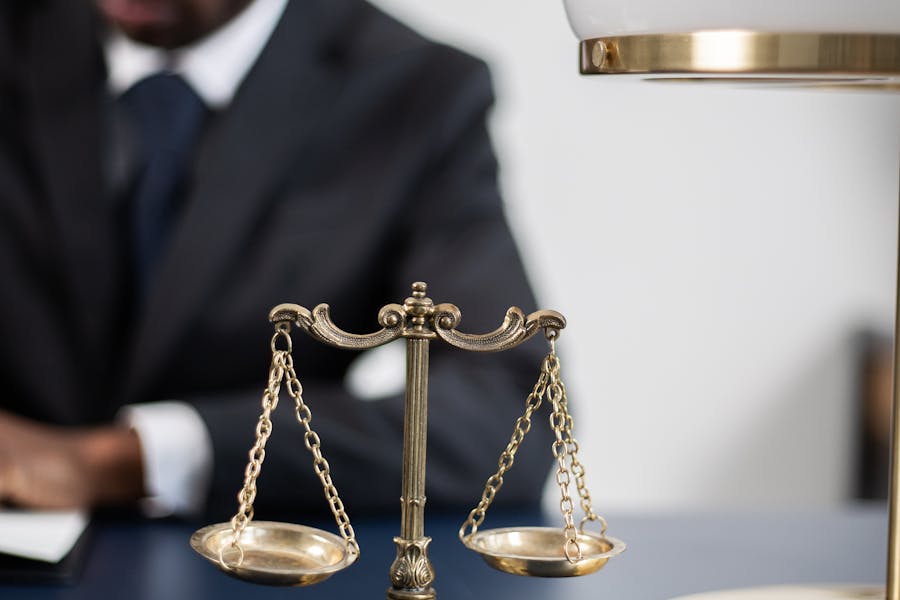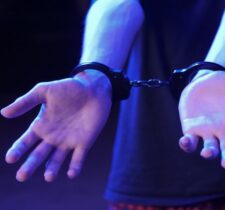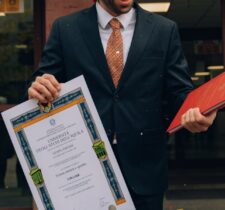Criminal justice is a fundamental part of any organized society. But what is criminal justice exactly? At its core, the criminal justice system is a framework of practices, institutions, and processes established by governments to uphold social control, deter crime, and sanction those who violate laws with criminal penalties and rehabilitation efforts. It functions as the mechanism for enforcing legal norms, protecting the rights of individuals, and ensuring societal order.
This article offers a deep dive into what criminal justice is, why it matters, and how it shapes modern life. Whether you’re a student, a legal enthusiast, or someone seeking clarity on how justice is served, you’ll find useful insights here. We’ll explore how the system works, who the key players are, what challenges it faces, and how it’s evolving in today’s world.
By the end, you’ll clearly understand what criminal justice is—and why it’s essential to every citizen.
What Is Criminal Justice?
Criminal justice refers to the system of law enforcement, courts, and correctional institutions designed to maintain social order, deter crime, and deliver justice. It involves police officers, judges, lawyers, and correctional officers working together to uphold the law, ensure public safety, and rehabilitate offenders.
What Is Criminal Justice and Why Does It Matter?
Criminal justice is more than just police and prisons. It is a vast, interconnected system that reflects a society’s values, rules, and commitment to fairness. At its most basic, criminal justice refers to the institutions and processes established by governments to control crime, enforce laws, and administer penalties.
The system involves three primary components: law enforcement (police and investigators), the judiciary (courts and judges), and corrections (prisons, probation, parole). Each branch plays a vital role in upholding justice—from investigating crimes to trying offenders, and finally, to enforcing sentences.
The criminal justice system also ensures due process, a legal guarantee that a person’s rights will be respected at all stages. It exists to protect the innocent, convict the guilty, and provide a fair, impartial process for all. Without such a system, society would risk descending into chaos, with no reliable way to resolve disputes or punish wrongdoing.
Furthermore, the criminal justice system serves a preventive function. Punishing wrongdoers it discourages others from committing crimes. Law enforcement officers patrol neighborhoods, making their presence felt to discourage crime. Judges interpret laws to create consistency, while correctional officers work to reform and reintegrate offenders.
Understanding what criminal justice is also means recognizing its evolving nature. Today’s system is adapting to new threats like cybercrime, terrorism, and human trafficking. It must balance public safety with civil liberties, incorporate restorative practices, and promote rehabilitation over punishment where possible.
In essence, knowing what criminal justice is helps citizens better engage with society. It empowers them to demand accountability, understand their rights, and contribute to a more lawful, equitable world.
How Does the Criminal Justice System Work?
The criminal justice system operates through a series of structured stages designed to maintain order, uphold laws, and ensure justice. From investigation to correction, each phase plays a vital role in delivering fair outcomes.
Law Enforcement as the Frontline
The criminal justice process begins with law enforcement. Police officers, sheriffs, and detectives play a critical role in responding to crimes, investigating incidents, collecting evidence, and arresting suspects. As the first point of contact in the system, they are essential for maintaining public safety and initiating legal proceedings.
The Role of the Courts
Once an individual is arrested, the case enters the court system. Here, judges, prosecutors, defense attorneys, and sometimes juries are responsible for ensuring a fair trial. This phase involves hearings, legal arguments, and potential plea deals. Courts interpret laws, determine guilt or innocence, and issue sentences based on evidence and legal procedures.
Corrections and Rehabilitation
After sentencing, the individual transitions into the correctional phase. This can involve incarceration in prisons, supervised probation, or parole. Modern corrections aim to balance punishment with rehabilitation, seeking to reintegrate offenders into society and reduce recidivism.
Appeals and Legal Oversight
The system includes checks and balances through appeals and judicial reviews. If a party believes an error occurred in the trial, they may appeal to a higher court, ensuring legal processes are upheld and rights are protected.
Civic Engagement and Public Influence
Citizens also play a role by serving on juries, voting on policies, and advocating for justice reforms. Their participation ensures the system evolves in line with community standards and democratic values.
What Are the Main Components of Criminal Justice?
The criminal justice system is built on interconnected components that work together to maintain law and order, deliver justice, and protect society. Each part plays a distinct role, but they function in unison to ensure a fair and effective legal process.
- Law Enforcement
This is the initial point of contact between the public and the justice system. Police officers, sheriffs, and detectives are responsible for investigating crimes, collecting evidence, and arresting suspects. - Judiciary
The courts oversee the legal process, where judges, prosecutors, defense attorneys, and juries determine the guilt or innocence of accused individuals and assign appropriate sentences. - Corrections
This component handles the punishment and rehabilitation of convicted offenders. It includes prisons, jails, probation, parole, and reentry programs aimed at reducing repeat offenses. - Legislation
Lawmakers play a vital role by crafting the laws that define criminal behavior and set penalties. These statutes form the foundation upon which the rest of the system operates. - Community and Victim Services
These services provide critical support to crime victims, offer counseling, and implement programs that help prevent future crimes and assist with offender reintegration.
Together, these components promote justice, ensure public safety, and encourage rehabilitation over retribution.
When Did Criminal Justice Begin and How Has It Changed?
The origins of criminal justice trace back to ancient civilizations. In Babylon, the Code of Hammurabi established some of the earliest written laws. Ancient Rome, Greece, and China also developed early forms of legal systems.
In medieval Europe, justice was often arbitrary. Trial by combat or ordeal was common. Over time, the rise of centralized governments led to more standardized procedures. The Magna Carta (1215) laid the groundwork for rights and due process.
The Enlightenment shifted views on punishment. Thinkers like Cesare Beccaria argued against torture and capital punishment, favoring proportional, humane treatment. This era influenced modern criminal justice by introducing ideas like fair trials, jury systems, and rehabilitation.
Today’s system is more complex. Technology aids law enforcement with forensics and surveillance. Digital databases improve efficiency. Yet, modern challenges like mass incarceration, racial bias, and cybercrime persist. Reforms are ongoing to promote transparency, accountability, and equity.
Understanding what criminal justice means means acknowledging this long evolution, from ancient codes to digital courtrooms.
Who Are the Players in Criminal Justice?
The criminal justice system is powered by a network of dedicated professionals who each play a unique role in upholding the law and ensuring justice. From arrest to rehabilitation, these key players ensure the system functions fairly and effectively.
Law Enforcement Officials
These include police, sheriffs, federal agents, and detectives. Their duties involve crime prevention, investigation, and arresting suspects.
Prosecutors and Defense Attorneys
Prosecutors represent the government, pressing charges against accused persons. Defense lawyers protect the legal rights of the accused.
Judges and Magistrates
Judges preside over court proceedings, interpret laws, and decide sentencing. They ensure due process is followed.
Corrections Officers and Parole Agents
They supervise individuals in prisons and on probation/parole, focusing on rehabilitation and monitoring.
Victim Advocates and Social Workers
These professionals support crime victims and help offenders reintegrate into society post-sentence.
Conclusion
Knowing what criminal justice is empowers individuals to engage meaningfully with the law. It is a dynamic system that touches every aspect of society, from policing and prosecution to rehabilitation and reform.
Informed citizens can better protect their rights, participate in civic life, and advocate for fair policies. As society changes, the system must evolve, balancing safety, liberty, and justice.
Whether you’re entering the legal field, studying the subject, or simply curious, understanding what criminal justice is is essential.
FAQ’s
What are the main goals of criminal justice?
The system aims to protect society, uphold individual rights, punish offenders, rehabilitate them, and deter future criminal behavior through a structured legal framework.
Who are the players in the criminal justice system?
Key professionals include police officers, lawyers, judges, correctional officers, probation officers, and social workers who manage different stages of the justice process.
How does the criminal justice process start and end?
It begins with the investigation and arrest by law enforcement, moves to trial in court, and ends with sentencing and correctional supervision or rehabilitation.
What is the difference between civil and criminal justice?
Criminal justice deals with crimes against the state and public order, while civil justice handles disputes between individuals or organizations, like contracts or property issues.
How is the criminal justice system changing today?
Modern criminal justice is embracing reforms like community policing, restorative justice, and technology-based investigations to ensure equity, efficiency, and accountability.







